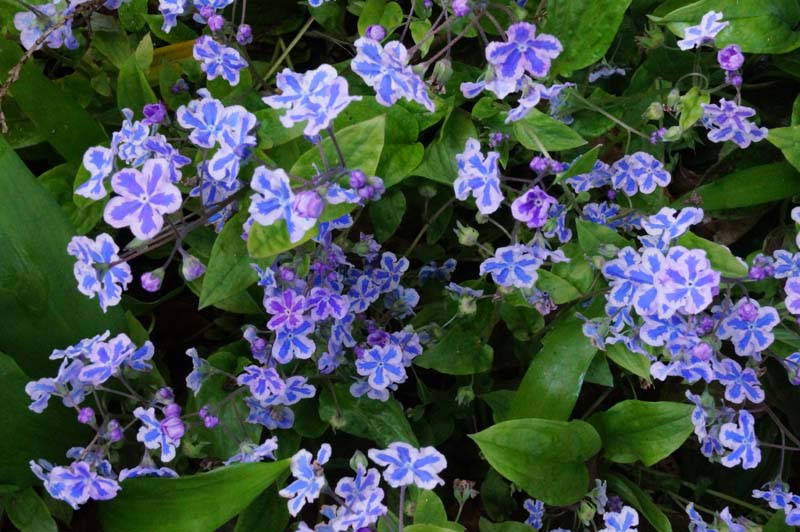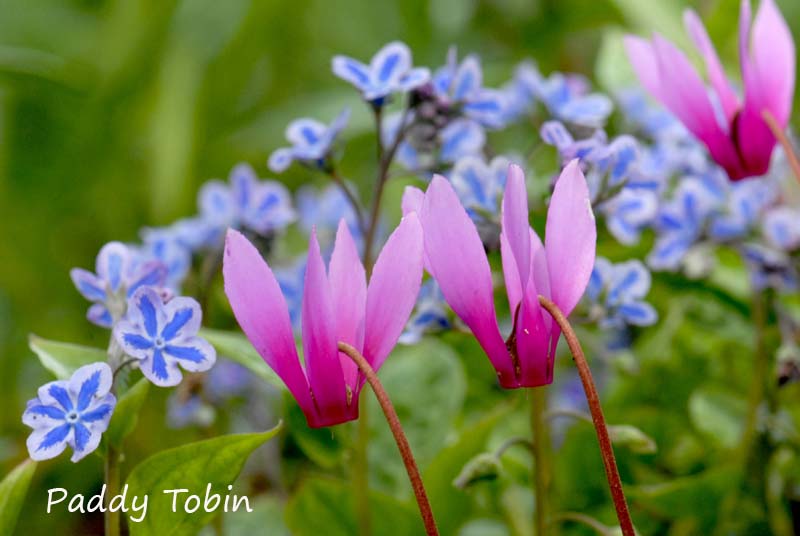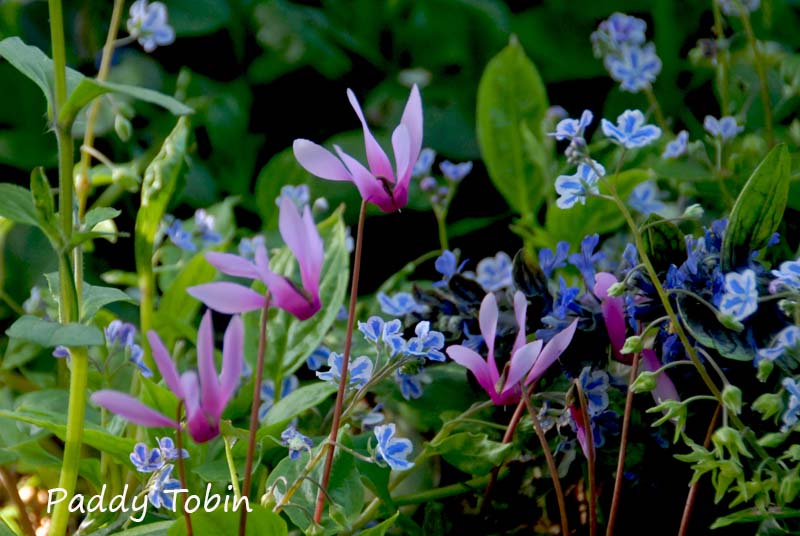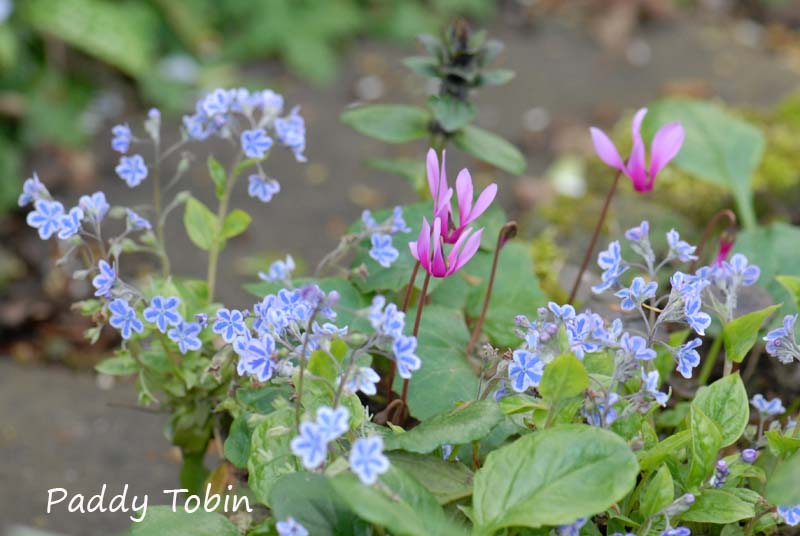The ability of some gardeners to spot an unusual trait in a plant is a known fact. Maybe the particular trait has to do with the plant’s stature, flower or leaf colour or its ability to fruit well. It is from here that we get our garden cultivars. In the case of Omphalodes cappadocica ‘Starry Eyes’, it was Mrs Eithne Clark who, in the early 1980s, identified this unusual form of the navelwort or blue-eyed Mary in her Dublin garden. Unlike the usual navelwort which has a tiny white-eye in a whole blue flower, the plant Eithne Clark brought to Charles Nelson at the National Botanic Gardens, had an edge of white to each flower.
Omphalodes cappadocica is a great addition to the spring garden and ‘Starry Eyes’ is even better. However, as a plant which seeds around, the seedlings will have flowers of whole blue or possibly a shade of lavender, all with a white eye. To keep the cultivar pure, vegetative propagation is a must, Fortunately, unlike some cultivars, it is very easy to identify any stray seedlings from the white-edged flowers of ‘Starry Eyes’. It is widely available and well worth seeking out.
(As appeared in Newsletter 151, January 2021. Text courtesy of Stephen Butler)




